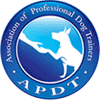I know, none of us like going to the vet’s office with a sick pet. But here are some simple rules to follow that will make your trip to the vet’s office more pleasant for you, your dog, and the office staff – and that’s a win-win-win!
Practice handling your dog at home.
The less stressed your dog is for an exam, the better for everyone involved. So: if you have a small dog, put them on your washer or dryer occasionally and practice touching them all over – and give them treats while you do it. This will help them feel more comfortable with the slippery metal surface of the exam table, and learn that it’s okay to be handled – indeed, you get treats if you put up with the human harassing you! If your dog seems stressed, then slow down, use more treats, and do shorter practice sessions. If you have a large dog, do the same thing, minus the table.
Bring your dog’s FAVORITE treat or toy with you.
This way you can reward good behavior. And be generous! This has a bonus effect of counter conditioning too: the vet can’t be that bad if you get treats or your favorite ball during the visit! The exception to this rule is if your dog is supposed to be fasting before their visit; sometimes before surgery or certain tests your dog needs to have an empty stomach, but your vet will let you know.
PUT YOUR DOG ON A LEASH.
This is a safety rule as well as for the peace of mind of those around you. Your dog may be brilliant off leash, but how is everyone else in the waiting room supposed to know that? If there is someone in the waiting room with a dog-aggressive dog who is on a leash, when they see you walk in with an off-leash dog, they have a mild panic attack. Have the courtesy to follow the rules; the vet’s office is neither the time nor the place to show off your off-leash skills.
Poke your head in and make sure the coast is clear before entering….
…and go through the door before your dog. This is not about training, but safety – you don’t know what kind of vicious parrot or pot bellied pig is behind that door! This is a great spot to use the “wait” you learned in class.
Don’t let your dog “say hello” to the other dogs.
You don’t know if they’re friendly, and keep in mind that dogs are far less tolerant when they’re in a stressful situation. All dogs need personal space, just like humans, and they may need much more space than usual if they are sick or in pain. Also keep in mind that some pets may be contagious.
Be honest with your vet.
Even if what your dog is doing is embarrassing or scary – I promise you, they’ve heard worse. Behavior problems may be linked to medical problems, so if your dog is likely to bite, say so. If the dog has been growling at other dogs or people lately, say so. If he doesn’t like his feet touched, say so. It’s only fair for your vet to have the whole story. If your vet doesn’t accept this information in an understanding manner and take steps to mitigate the difficulty, find a different vet. They should be understanding of dogs’ behavioral differences, not shaming. And if you have these issues, contact us so we can do some private training to get rid of them!
Ask questions. Ask “why.” Ask until you understand.
YOU are your pet’s voice, and the only one responsible for their health and happiness. No reputable vet will have a problem with answering your questions, if you phrase them nicely (although you might run out of time in the appointment!) If you understand what’s going on with your dog, you can better advocate for his or her health. If your vet won’t answer your questions or acts offended when you show an interest in your pet’s health, find a different vet.
If you’re having trouble with your dog’s behavior at the vet’s office, contact us so we can help you!









